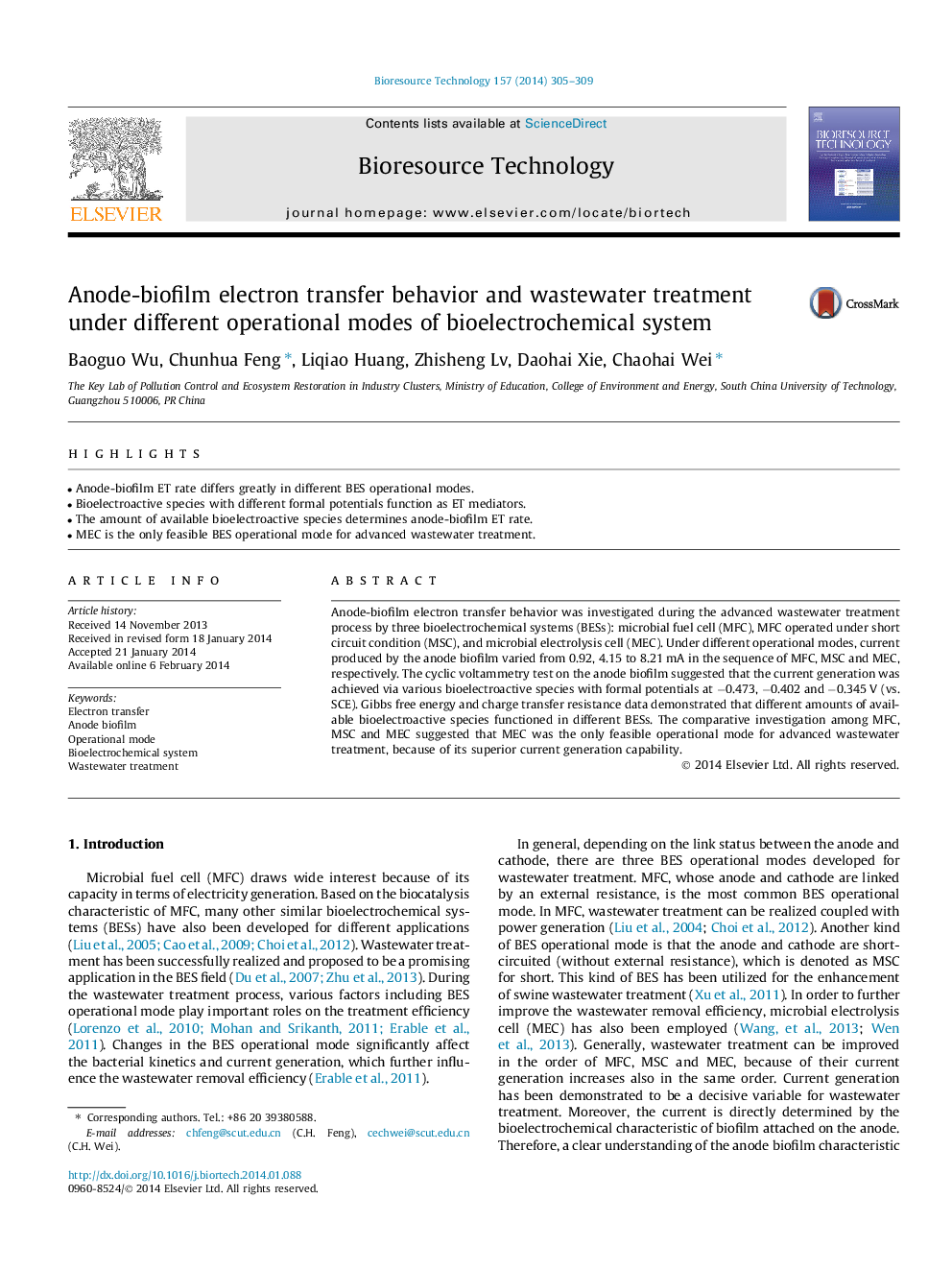| کد مقاله | کد نشریه | سال انتشار | مقاله انگلیسی | نسخه تمام متن |
|---|---|---|---|---|
| 680913 | 1459986 | 2014 | 5 صفحه PDF | دانلود رایگان |
• Anode-biofilm ET rate differs greatly in different BES operational modes.
• Bioelectroactive species with different formal potentials function as ET mediators.
• The amount of available bioelectroactive species determines anode-biofilm ET rate.
• MEC is the only feasible BES operational mode for advanced wastewater treatment.
Anode-biofilm electron transfer behavior was investigated during the advanced wastewater treatment process by three bioelectrochemical systems (BESs): microbial fuel cell (MFC), MFC operated under short circuit condition (MSC), and microbial electrolysis cell (MEC). Under different operational modes, current produced by the anode biofilm varied from 0.92, 4.15 to 8.21 mA in the sequence of MFC, MSC and MEC, respectively. The cyclic voltammetry test on the anode biofilm suggested that the current generation was achieved via various bioelectroactive species with formal potentials at −0.473, −0.402 and −0.345 V (vs. SCE). Gibbs free energy and charge transfer resistance data demonstrated that different amounts of available bioelectroactive species functioned in different BESs. The comparative investigation among MFC, MSC and MEC suggested that MEC was the only feasible operational mode for advanced wastewater treatment, because of its superior current generation capability.
Journal: Bioresource Technology - Volume 157, April 2014, Pages 305–309
